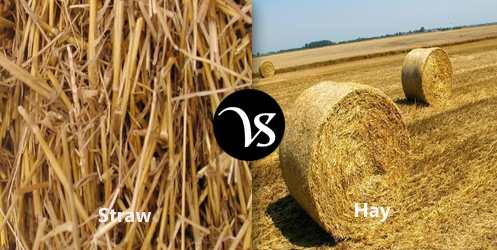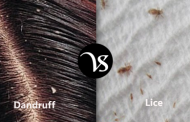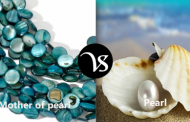 Straw:
Straw:
Straw is an agricultural by-product, the dry stalks of wheat, barley, oats, rice and rye. It has many uses, including fuel, livestock bedding and fodder, thatching and basket making. It is usually gathered and stored in a straw bale, which is a bundle of straw tightly bound with twine or wore. Straw may be fed as part of the roughage component of the diet to the cattle or horses that are on a near maintenance level of energy requirement.
Hay:
Hay is a grass, legumes or other herbaceous plants that have been cut, dried and store for use as animal fodder, particularly for grazing livestock such as cattle, horses, goats and sheep. Hay is also fed to pets such as rabbits and guinea pigs. Hay can be used as animal fodder when or where there is no enough pasture or rangeland on which to graze an animal, when grazing is unavailable due to weather or when lush pasture by itself is too rich for health of animal.
Differences:
| Basis | Straw | Hay |
|---|---|---|
| Definition (www.oxforddictionaries.com) |
Dried stalks of grain, used especially as fodder or as material for thatching, packing, or weaving | Grass that has been mown and dried for use as fodder. |
| Synonyms | Stubble, fodder, creamy, down, dust, feather, canary | Harvest, provender, product, bunk, output, feed, fodder |
| Antonyms | Olive, swart, raven, neutral, dark, ebony, black | Grow, means, pelf, pile, promote, pot, mint |
| Word origin | The word straw was originated from Old English strēaw, of Germanic origin; related to Dutch stroo and German Stroh, also to strew. | The word hay was originated from Old English hēg, hīeg, hīg, of Germanic origin; related to Dutch hooi and German Heu, also to hew. |
| Colour | Straw is yellow or golden colored. | Hay is green in colour. |
| Nutritional value | Straw has less nutritional value. | Hay has high nutritional value. |
| Used for | Straw is used for baskets. | Hay is used to feed farm animals. |
| Pronunciation |
|
|
| Versatility | Straw is much more versatile. | Hay is less versatile. |
| Example in Sentence |
|
|





